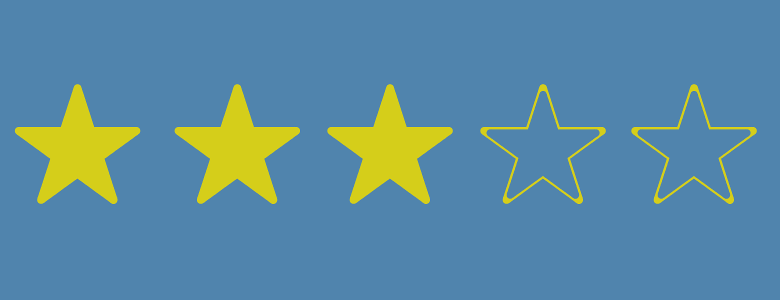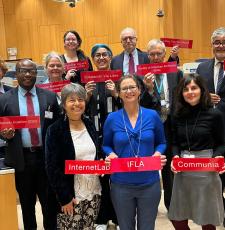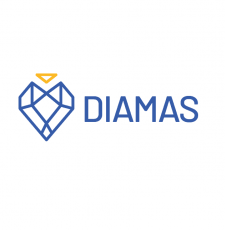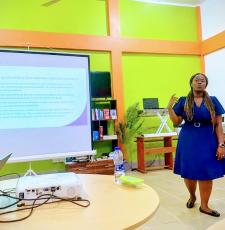 This blog, by EIFL Copyright and Libraries Programme Manager Teresa Hackett, was originally published on 5 September 2016 by CILIP (the Chartered Institute of Library and Information Professionals in the United Kingdom).
This blog, by EIFL Copyright and Libraries Programme Manager Teresa Hackett, was originally published on 5 September 2016 by CILIP (the Chartered Institute of Library and Information Professionals in the United Kingdom).
Every April, the Office of the US Trade Representative (USTR) issues the "Special 301 Report", an annual review of the state of intellectual property (IP) rights with US trading partners around the world.
Countries deemed to have inadequate IP protection and enforcement are graded into categories - priority watch list and watch list - in the report that is usually hailed by industry and assailed by public interest groups who complain about one-sidedness and lack of balance in its findings.
What if library advocates had a handy way to measure the aspects of copyright law most important to them? Like the provisions that allow libraries to develop their collections, provide robust support to education and research, preserve our cultural heritage not just for tomorrow but for the long term future, and to serve all persons with disabilities equally.
Or legally speaking, to measure the limitations and exceptions that provide the essential balance in copyright law between the rights of copyright owners and the rights of users..
The EIFL Core Library Exceptions Checklist is a practical and, we hope, a fun way to help librarians do just that – to evaluate their domestic copyright law, identify gaps or see where the law is doing well.
The checklist can be used by the library community to generate discussion around copyright issues, assist with copyright law reform and, if the results from different countries are collated, to provide a global picture of the real state of copyright laws from a library perspective. A kind of ‘Special 301’ report for libraries.
Copyright laws fit for purpose
The checklist complements the excellent Study on Copyright Limitations and Exceptions for Libraries and Archives prepared by Dr. Kenneth D. Crews for the World Intellectual Property Organization (WIPO) that brings together copyright statutes on libraries and archives from 188 countries.
The WIPO study provides a wealth of useful information.
It shows that many countries around the world are amending and updating their copyright laws. In fact, in the five years between 2010 and 2015, sixty-six countries changed their copyright law with respect to libraries in some way, according to data from the series of three studies.
We also know from the study that many countries still have no provision for libraries in their domestic law [1]. Nearly half of WIPO’s member states do not explicitly allow libraries to make copies for research or study. And we know that the pace of change regarding digital activities is too slow.
Yet in an interconnected world where government policies increasingly mandate international research, and global collaboration among scientists and scholars is driving the demand for access to materials held in libraries around the world, it is vital that copyright laws in every country are fit for purpose.
What every copyright law should have
The EIFL Core Library Exceptions Checklist sets out provisions that every copyright law should have to support modern library activities and services, such as lending, making an electronic copy of a journal article or book chapter for a user, providing library material for use in virtual learning environments, and undertaking digital preservation.
It takes as its starting point what libraries do, and applies it to the law. It also includes issues not covered by the WIPO study such as lending, and text and data mining.
While librarians will primarily take the lead using the checklist, it can easily be shared with policy-makers, academics and other copyright specialists to increase knowledge of specific library copyright issues and to support library advocacy.
How the checklist works
There are two documents – a checklist and a scorecard.
The first part of the checklist features library activities and services i.e. collection development, support for education and research, preservation and replacement, and serving persons with print disabilities.
The second part covers important ‘cross-cutting’ aspects of the law that affect the scope and efficacy of the exceptions. For example, a broad exception for preservation might look good at first glance but if the definition of reproduction is restricted to paper copies, then the preservation exception is of limited value in the digital environment.
Each question in the checklist is accompanied by a short explanatory note and a model legal provision.
The second document is a scorecard to grade how the law performs for libraries.
‘Rate my copyright law’ contains the checklist questions that can be answered as yes, partly and no. If the answer to a question is yes, the score is two points. If the answer is partly, the score is one point, and it’s zero for the answer no. Add up the score to get the result from a total of 36 points (if every question is answered).
The scorecard online is a fillable PDF form - the fields can be filled in, saved electronically and printed.
The checklist is also available in poster format.
Informing and empowering librarians
Of course, the rating exercise is not an exact science. There might be uncertainty over some of the answers prompting deeper analysis on the questions.
Or there might be different opinions especially among different stakeholders. The fact that there are different, equally valid legal interpretations can help to empower librarians to manage risk in a proportionate and informed way - see 50 shades of risk at the CILIP conference - copyright and risk management.
Perhaps the checklist might reveal differences between common library practices and what the law apparently allows, especially if technology is involved.
The differences could be a catalyst for the library community to advocate for the law to be brought up-to-date. For example in Poland, the new copyright law settles legal matters for activities that had become commonplace, such as the reproduction of short works for educational purposes and the use of whole works, such as photographs in certain circumstances [2].
Rate my copyright law - how low can you go?
The checklist had its first public outing in August at the 2016 World Library and Information Congress (WLIC) in Colombus.
At a meeting of IFLA national, international and other association members, over 100 people participated in a lively exercise to ‘Rate my copyright law’. One librarian is reported to have awarded her law the grand score of five marks, less than 14%!
IFLA plans to use the results of the exercise to support advocacy work.
EIFL welcomes wide use of the checklist and scorecard.
We hope it will be a practical resource to support advocacy at whatever stage of copyright development a country is at. For example, it might start a debate for the first time in the library community, kickstart reforms by clearly highlighting shortcomings in the law, or provide model language for library-friendly amendments (that can of course be adapted), if the law is already under review.
A ‘Special 301’ report for libraries?
In addition to helping libraries rate national copyright laws, the checklist provides an opportunity to assess the state of copyright laws globally from a library perspective.Then library-friendly laws could easily be identified, and librarians in countries with restrictive copyright laws would have good practice examples to draw upon.
Perhaps the numbers could be crunched with nice visualisations at a hackathon, like the EU Copyright Hackathon taking place in November 2016.
Then we’d have a ‘Special 301’ report for libraries to pitch to policy-makers in support of national and international copyright law reform.
References
EIFL Rate my copyright law - how well does your law support libraries?
WIPO Study on Copyright Limitations and Exceptions for Libraries and Archives
[1] Time for a single global copyright framework for libraries and archives, WIPO Magazine, December 2015
[2] How new Polish copyright law modernizes library services, EIFL, August 2016
SHARE / PRINT








